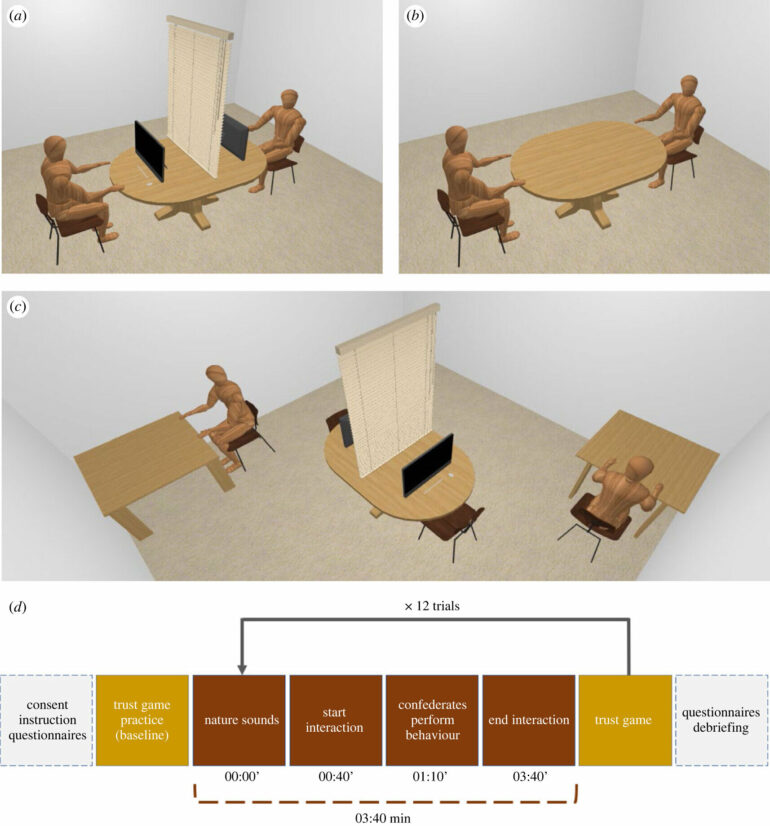Can we truly connect with each other through video calls? Yes, according to a recent study. Psychologists found our bodies synchronize almost as much in digital conversations as in real life. But this doesn’t mean we should skip in-person meetings altogether, says researcher Fabiola Diana.
“We humans are actually very similar to chameleons,” says Fabiola Diana. “Because we adjust to each other’s behavior in social interactions, sometimes very subliminally and completely without our conscious control. That’s why researchers call it the ‘Chameleon Effect.”‘ She points to when we see a colleague across the room yawning, we suddenly feel the urge to do the same.
This phenomenon, called mimicry, is the focus of Diana’s Ph.D. research, in which she explores how and why we do it. “From an evolutionary perspective, being in sync with the people around us is important for survival. Mimicry can help us regulate social interaction, because it could make us feel more connected and secure. On the other hand, it could also be a tool to get a deeper understanding of the world around us or predict the behavior of other people. But a definitive function of mimicry has not yet been defined, this is also one of the core topics of my Ph.D.”
We asked Diana some questions:
Why did you decide to study mimicry in video calls?
In the past 30 to 40 years, technology has developed enormously. I’m born in 1993 and have experienced how modern devices has infused our daily lives, I can’t imagine a world without it. As technology has advanced, video conferences have become more common in the workplace, especially during the COVID-19 pandemic. I think it’s very important to explore what effect these new means of communication have on our social interaction, for example in mimicry.
How did you study this?
We paired 27 participants with a confederate; someone who pretends to be a participant but is actually an actor in the study. These confederates were instructed to perform certain behaviors at a specific time, for example scratching their nose and yawning. Then participants sat with the confederates in three different conditions.
In the first one they sat face to face, the second group met through video call and in the third one, participants saw a pre-recorded video of the other person, without them knowing it was pre-recorded. They did not talk to the confederate, but just looked at each other, while the confederate performed these behaviors. In between, they played a trust game. We wanted to investigate the influences of these settings on mimicry, and the impact of these behaviors on trust.
And what surprised you about the findings?
We found that participants in the video call and face-to-face conditions mimicked each other’s behaviors at similar rates, whereas those in the pre-recorded video condition showed significantly less mimicry. We also found that the yawning and scratching had a negative impact on trust, which makes sense, because these behaviors can come off as indifferent. The results on video call and mimicry are very robust, but the ones about trust did not pass the robustness check and must be interpreted with caution.
If we mimic each other in video calls, and mimicking can help smoothen our social interaction, then why can it still feel so draining?
Well, mimicry is just one part of social interaction, other factors matter as well. First of all, there’s sometimes delay in video calls, which requires a lot of cognitive load. Real life interaction is completely synchronized, which takes less energy. Secondly, it’s exhausting to keep eye contact for such a long time, all the while having the other person’s face close to you.
That is something we’re not used to when interacting with a group of people. Also, in real life conversations, we’re used to interrupting each other sometimes, which it not very polite but unavoidable. Doing this in video calls immediately makes the other person incomprehensible, which is tiring.
Video calls get more and more ingrained in our work culture. Do you see a future in which we’ll only contact our colleagues through video call?
Yes, and no. I think working with video calls has opened up our vistas: it allows us to interact with anyone, anywhere, so collaboration has become much easier. Also, video calls are often more effective and to the point than face to face conversations. But they also lack components that are crucial in social interaction, such as touch, body language and smell. You cannot shake someone’s hand when meeting them online, even though this gives us a lot of information about them. So, if we value the richness of these interactions, video calls can never fully replace real life conversation.
The study is published in the journal Philosophical Transactions of the Royal Society B: Biological Sciences.
More information:
Fabiola Diana et al, How video calls affect mimicry and trust during interactions, Philosophical Transactions of the Royal Society B: Biological Sciences (2023). DOI: 10.1098/rstb.2021.0484
Citation:
Research finds WiFi isn’t the only thing connecting us during video calls—our bodies are as well (2023, April 5)



